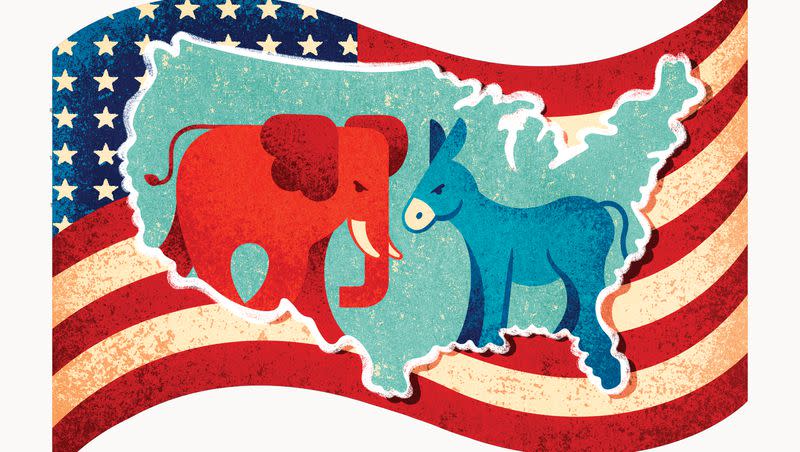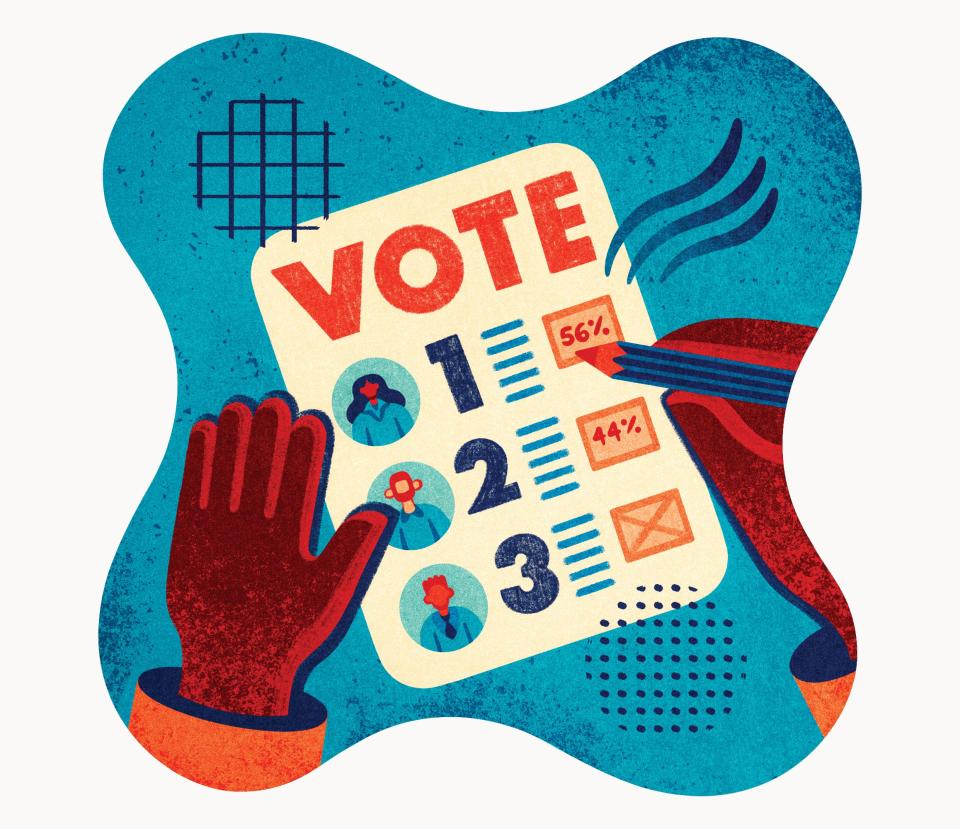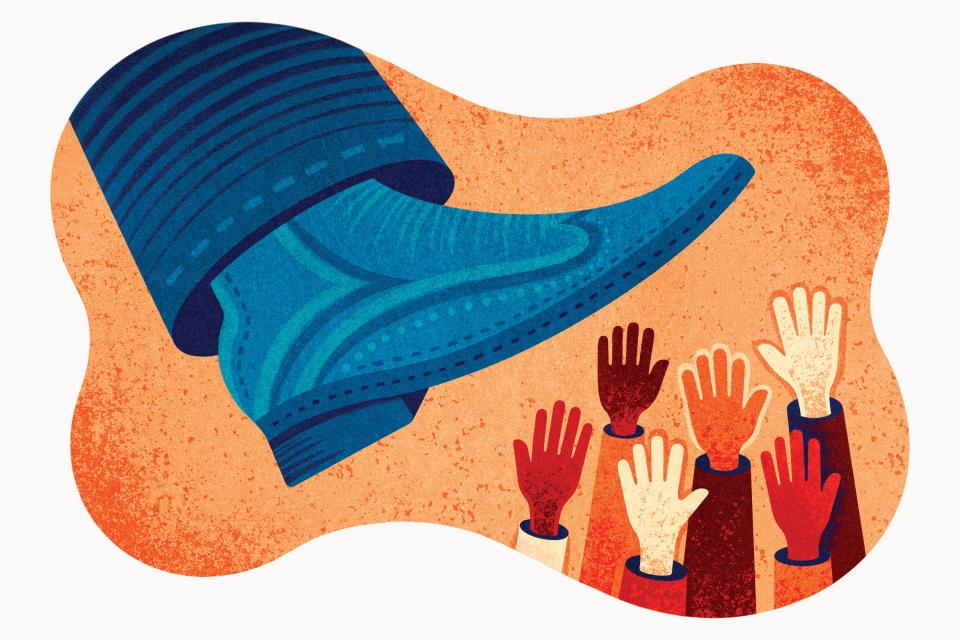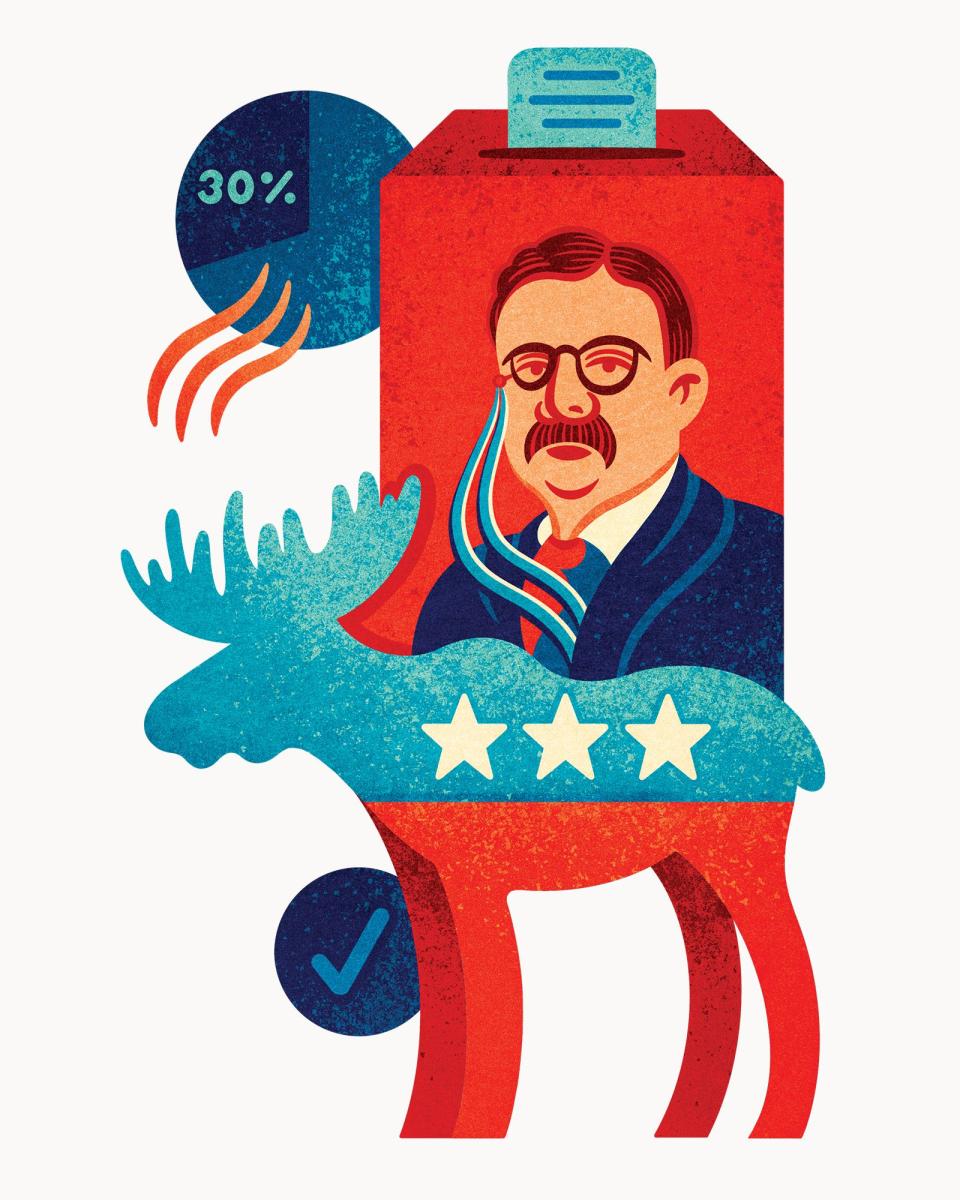Multiple choice

- Oops!Something went wrong.Please try again later.
- Oops!Something went wrong.Please try again later.
- Oops!Something went wrong.Please try again later.
More than half a century has passed since a candidate from outside the Republican or Democratic parties has won a single state in a presidential election (George Wallace in 1968). And yet, according to recent Gallup polling, dissatisfaction with America’s two-party system is at an all-time high. Could an alternative be the answer to our gridlocked and hyperpartisan era? Political scientist Lee Drutman thinks so. In his book “Breaking the Two-Party Doom Loop,” Drutman argues that for most of our history the two parties had significant ideological overlap, which worked well in “our compromise oriented political institutions.”
Over time, however, the two parties have come to represent distinct and warring visions of American identity, with each claiming to represent the majority. How did we get here? And would an alternative to the two-party system be better for democracy?

Original intent
The founders were suspicious of political parties, favoring instead a government run by elites. In fact, George Washington was so alarmed by the rise of parties during his second term (Alexander Hamilton’s Federalists and Thomas Jefferson’s Republicans) that he dedicated part of his farewell address to condemning them as a path to despotism. John Adams went even further, arguing that “a division of the republic into two great parties … is to be dreaded as the greatest political evil.”
Today, Washington’s warning of factions seeking to dominate the other seems prophetic.
Party time
By 1824, this view had shifted and political parties were seen as vital to giving voice to the people. The rise of political parties resulted in a far higher level of engagement in politics: In 1824, only 26 percent of eligible voters (property-owning white men) voted. By 1840, the turnout was 80 percent (owning property was eliminated as a requirement to vote in 1828). And yet it wasn’t until the 20th century that the parties began to resemble what we know them as today.

Why parties matter
While the founders may have been suspicious of political parties, the general consensus today is that they are essential institutions of democracy. As former Brigham Young University political science professor David Magleby has argued, political parties organize democracy in that they recruit and nominate candidates and stand for a particular view of the role of government. Research has also shown that those most involved in political parties are also best informed on issues affecting their communities and nations.
The man in the arena
The most successful third-party nominee was Theodore Roosevelt. Disillusioned with his successor, Howard Taft, he ran against him for the Republican nomination in 1912. While Roosevelt won more votes in the primary, Taft already secured enough delegates in the South to win the nomination. Roosevelt formed the breakaway Progressive Party, and eventually carried six states and nearly 30 percent of the popular vote, becoming the only third-party candidate to finish second in a presidential election. Ross Perot got almost one-fifth of the popular vote in 1992, preventing Bill Clinton and George Bush from winning a majority in any state except Arkansas.

Ranked choice voting
One solution, even in a two-party system, is ranked choice voting.
Countries like Ireland and Australia have used it for years and it’s recently gained popularity in the U.S., where it has been adopted for some elections in 18 states, including Utah. Unlike the winner-take-all method of our current system, ranked choice voting allows voters to select candidates in order of preference.
Proponents of ranked choice voting say it can reduce polarization: Rather than promoting extremes and ideologues as our current primary system often does, it favors consensus candidates. This, in turn, could lead to more civil elections because candidates are encouraged to form coalitions.
American exceptionalism
With just two main parties and a “first-past-the-post” (single winner plurality), the United States is a global outlier. Most of the world’s democracies are multiparty, and most hold elections using proportional representation. Advocates of the multiparty system say it’s more likely to result in higher voter turnout and better representation of political and ethnic minorities. “In multiparty democracies, parties do not claim to represent true majorities,” Drutman writes. “They promise to represent and bargain on behalf of the different voters and issues they represent.”
“The alternate domination of one faction over another, sharpened by the spirit of revenge natural to party dissension ... is itself frightful despotism.” —George Washington, farewell address, 1796
Balanced compromise
Denmark has over a dozen political parties in the Danish Parliament — from The New Right to the Green Left. Brazil has over 30 parties in its National Congress. The Netherlands has a party called 50Plus, which caters to pensioners. Proponents of a multiparty system say that because no two parties are likely to win an election with so many choices, elected representatives must rely on coalitions to gain a majority. This encourages parties to work together and typically brings them closer to the center.
Fringe beliefs
The biggest strength of a multiparty system — diversity of representation — is also one of its greatest weaknesses because it gives small factions disproportionate influence and a path to enter the mainstream. In France, the far-right National Rally went from six to 89 seats in the most recent parliamentary election, making it the most unified opposition to President Emmanuel Macron. For every party that caters to environmentalists or libertarianism, there’s a party with extremists who want to put an end to democracy in favor of fascism.
This story appears in the November issue of Deseret Magazine. Learn more about how to subscribe.

